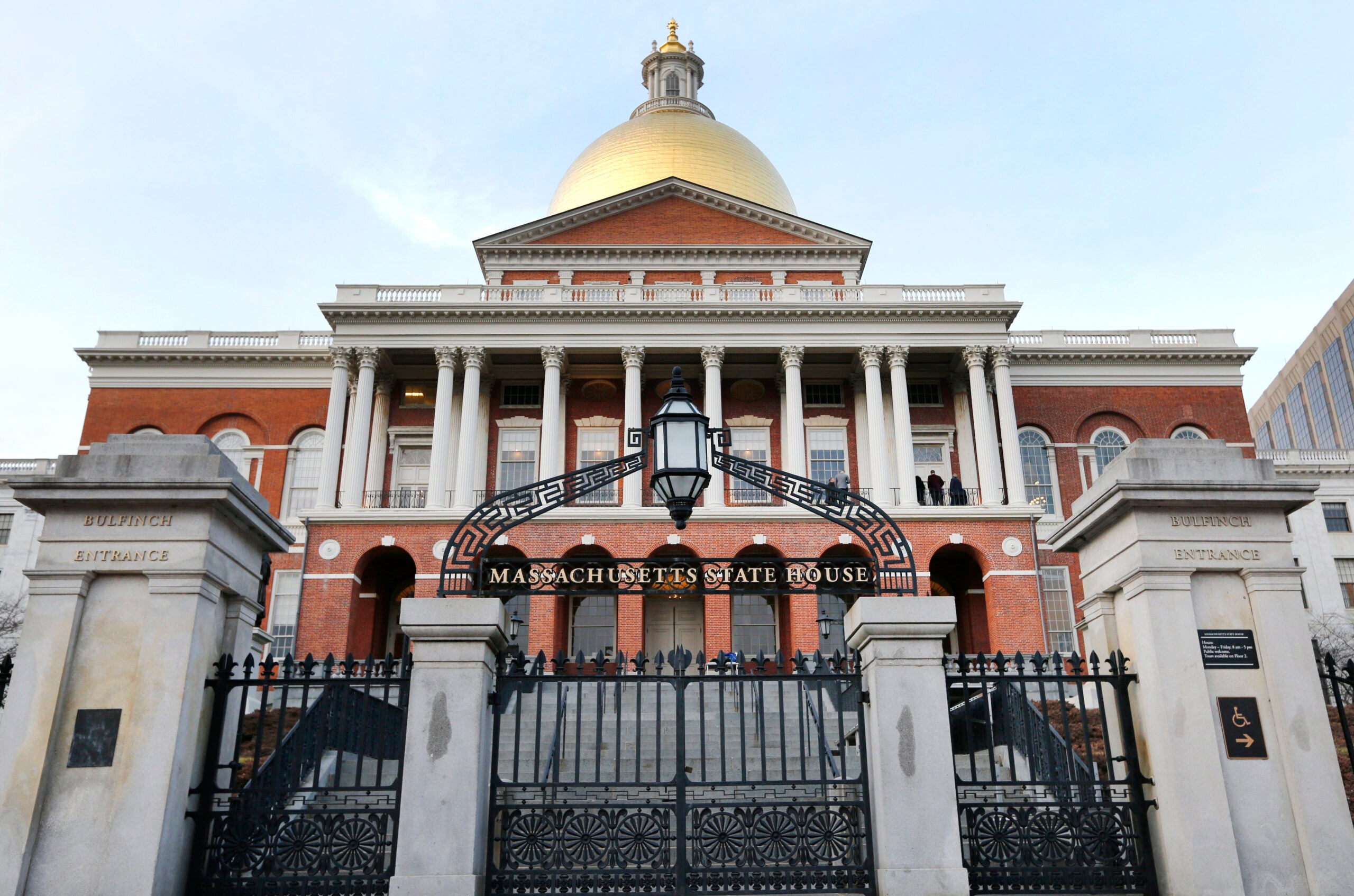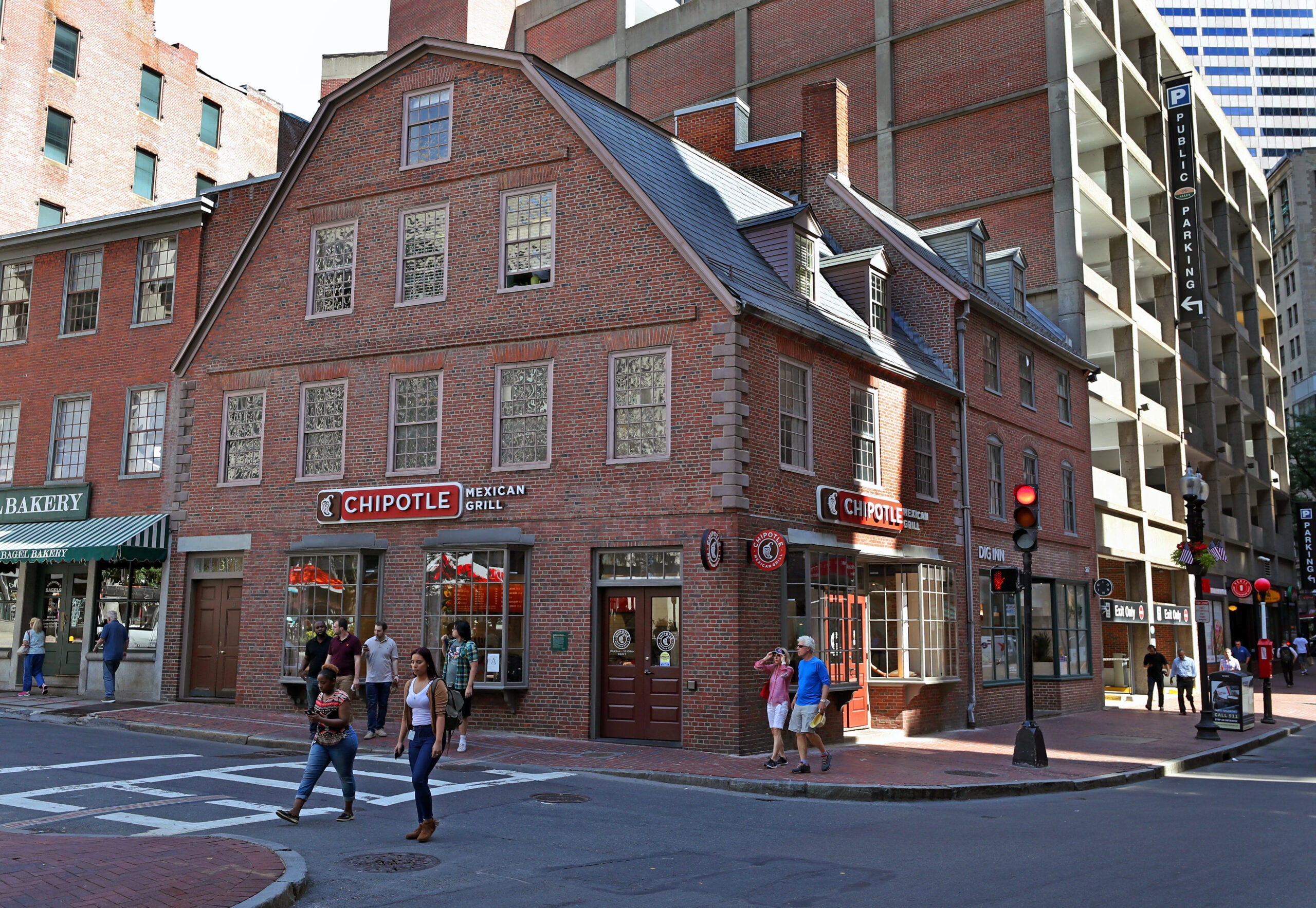Need weekend plans?
The best things to do around the city, delivered to your inbox.

Boston’s iconic 2 ½-mile Freedom Trail connecting 16 historical sites attracts more than 4 million visitors annually and was named one of the top American landmarks by Fodor’s Travel earlier this year.
Visitors can walk in the footsteps of America’s founding fathers on the famous brick path, which runs from Boston Common to the Bunker Hill Monument in Charlestown.
“It’s a great way to not only get some exercise but also connect with the nation’s history,” said Dave Broker, operations manager for The Freedom Trail Foundation, which offers tours 362 days a year.
Lifelong Boston residents have called the trail a must-do city activity.
Ahead, Broker shares what’s special about each stop.

The Freedom Trail begins at Boston Common. Established in 1634, it is America’s oldest public park.
It was originally meant as a common pasture for grazing sheep and cattle, Broker said, and the Puritans bought the property from Anglican minister William Blackstone and turned it into a Common.
In 1775, the British soldiers were stationed on the Common before they left to march to Lexington and Concord, he said.
“Over the years it has been the site for all sorts of things, from public punishments that the Puritans conducted to various protests, military drills, and parties,” Broker said.
Today, the Common hosts a variety of public attractions, such as free Shakespeare on the Common, carousel rides, swimming and skating on the Frog Pond, and more.

The gold dome on the Massachusetts State House, built in 1798, wasn’t always that color, Broker said.
The dome was made of wood, Broker said, and Paul Revere’s company covered it with copper in 1802. It was first gilded with gold leaf in 1874.
“This is actually America’s oldest functioning state capitol building,” Broker said. “It’s still used to conduct the daily business of government for the Commonwealth of Massachusetts.”
The building sits on 6.7 acres of land on Beacon Hill, named so because it used to be a tall hill with a signal beacon on it, Broker said. John Hancock, the first governor of Massachusetts, originally owned the land for his cow pasture.

The 217-foot steeple of Park Street Church was once the first landmark visitors would have seen when coming into Boston, Broker said.
Founded in 1809, it sits on the site of what used to be a communal granary, he said.
“The church has a storied history as a congregation dedicated to human rights and social justice,” Broker said.
Abolitionist William Lloyd Garrison performed his first antislavery speech at the church in 1829. In the 20th century, the church played a key role in the founding of the Boston branch of the NAACP, he said.
The song “My Country ‘Tis of Thee” was sung for the first time at this church on July 4, 1831.

The Granary Burying Ground is the resting place for some of Boston’s most notable citizens, Broker said.
Established in 1660, the burying ground was named after a granary that used to occupy where nearby Park Street Church now stands. There are about 5,000 people buried there, Broker said.
At the historic burying ground, visitors will find the graves of Paul Revere; Benjamin Franklin’s parents; victims of the Boston Massacre; Declaration of Independence signers John Hancock, Samuel Adams, and Robert Treat Paine, and more, Broker said.

King’s Chapel was founded in 1686 as New England’s first Anglican Church. It was originally a wooden chapel, Broker said, and the existing stone structure was completed in 1754.
Following the American Revolution, the church became Unitarian and it’s still an active Unitarian church today, Broker said.
“There’s no steeple on top, which is unusual for a New England church, but inside the bell tower is a 2,400-pound bell that was crafted by Paul Revere,” Broker said.
The bell, finished in 1816, was one of the final works Revere completed before he died, he said.
King’s Chapel Burying Ground, the oldest burying ground in Boston, is the resting place of John Winthrop, first governor of the Massachusetts Bay Colony; Mary Chilton, believed to be the first woman to step off the Mayflower; and William Dawes, who rode with Paul Revere on his famous ride, Broker said.

Boston Latin School, founded in 1635, is the oldest public school in America.
“Originally when it was built, instruction was limited to white boys,” Broker said. “Girls actually were not eligible to go to Boston Latin until 1972.”
One of the school’s most famous students was Benjamin Franklin, so a statue of Franklin marks the School Street location of the original schoolhouse. Franklin dropped out of school at age 10 to work for his father, Broker said.
The school is now located in Boston’s Fenway neighborhood.

The Old Corner Bookstore, built in 1718, is Boston’s oldest commercial building and the former home of 19th-century publishing company Ticknor and Fields.
“They produced dozens of great American authors and their works,” Broker said.
Among the work published by Ticknor and Fields was “Walden” by Henry David Thoreau, “The Scarlett Letter” by Nathaniel Hawthorne, “Uncle Tom’s Cabin” by Harriet Beecher Stowe, and “Paul Revere’s Ride” and other poetry by Henry Wadsworth Longfellow, Broker said.
Over the centuries, the building has been used for many purposes such as a residence, apothecary, tailor shop, and it is currently a Chipotle Mexican Grill, he said.

About 5,000 Bostonians gathered inside the Old South Meeting House on Dec. 16, 1773, to discuss the controversial tea tax and “it was from there that night that the Boston Tea Party began,” Broker said.
“They marched down to the wharf and dumped 342 chests of tea into the Boston Harbor,” he said.
The Old South Meeting House was built in 1729 as a Puritan house of worship, and among the famous individuals who worshipped there were Benjamin Franklin and Phillis Wheatley, Broker said.
When the British occupied Boston, they stripped out the pews and turned it into a riding stable. The building was nearly demolished in 1876, but was saved by the citizens of Boston, Broker said. The building has been open to the public as a museum and meeting place since 1877.

The Old State House, built in 1713, was the seat of government for Massachusetts until 1798 when it moved to Beacon Hill. It is the oldest surviving public building in Boston.
“It was inside there, where James Otis Jr. delivered his five-hour speech opposing the British Writs of Assistance,” Broker said.
The Boston Massacre also took place outside the building.
“It was on that balcony where the Declaration of Independence was first read to the people of Boston,” Broker said. “Afterward, the people got so excited that they climbed up on top of the building and tore down the lion and unicorn there, which were symbols of the British monarchy.”
Today it is a Boston history museum.

The Boston Massacre took place outside of the Old State House and the subsequent trial happened inside, Broker said.
On March 5, 1770, tension between Bostonians and Redcoats over occupation and taxation resulted in the following five civilians being killed by gunfire: Crispus Attucks, James Caldwell, Patrick Carr, Samuel Gray, and Samuel Maverick.
The incident fueled anti-British sentiment and was an important event leading up to the Revolutionary War.

Faneuil Hall, built by shipping merchant Peter Faneuil in 1741, was one of America’s first public meeting venues and a town meeting hall for Boston during the time of the American Revolution, Broker said.
“Faneuil Hall is often called the home of free speech and the cradle of liberty,” Broker said.
Abolitionists, suffragists, and labor unions are a few of the groups who have conducted debates, meetings, and protests at Faneuil Hall.
Though the structure is larger today than it was at the time, the first-floor market stalls are much like the merchant stalls that were there in the 1700s, Broker said.
“There is a great hall on the second floor, which provides a forum for debate for the people of Boston, much like it did during the time of the revolution,” he said.
Faneuil Hall is where Boston holds its naturalization ceremonies for new citizens.

The Paul Revere House in the North End was built around 1680, making it the oldest surviving structure in the downtown Boston area.
“It’s the only official Freedom Trail historic site that was a home,” Broker said.
Legendary Patriot Paul Revere bought the house in 1770 and sold it in 1800.
“It was from that house that he set out on his famous midnight ride on April 18, 1775, to warn the Patriots in Lexington and Concord about the British marching on their town,” Broker said.
The house was restored in the early 1900s and opened as a museum in 1908.

The Old North Church, built in 1723, had an important role in the midnight ride of Paul Revere.
“It is most famous for hanging two lanterns from the steeple on the night of April 18, 1775,” Broker said.
Paul Revere asked church sexton Robert Newman to use a light signal in the steeple to warn the Patriots that the British were coming: one lantern meant the British were coming by land and two lanterns meant they were coming by water.
Henry Wadsworth Longfellow famously penned the plan in his poem “Paul Revere’s Ride” as “One if by land, and two if by sea.”
Visitors can tour the church and also the crypt, where about 1,100 people were laid to rest, Broker said.

Copps Hill Burying ground, Boston’s largest colonial burying ground, dates back to 1659. It is the final resting place of many Boston artisans and merchants who lived in the North End.
Famous people buried there include Robert Newman, the sexton at Old North Church; Cotton and Increase Mather, Puritan ministers associated with the Salem Witch Trials, and Prince Hall, Black Freemasonry founder.
“Also, interestingly, the burial marker of Captain Daniel Malcolm is riddled with bullet marks from when the British soldiers stationed there used it for target practice,” Broker said. “That’s an interesting thing to see.”
Malcolm was a member of the Sons of Liberty.

The U.S.S. Constitution, the world’s oldest ship still afloat, was launched in Boston in 1797.
The ship was dubbed “Old Ironsides” during its service in the War of 1812, when it fought the British frigate H.M.S. Guerriere.
“During that battle, the British cannonballs appeared to have bounced off the side of the ship causing an unknown sailor to shout, ‘Huzzah, her sides are made of iron!'” Broker said.
It’s still an active commissioned U.S. Navy warship and the public can tour it in Charlestown, where it is docked beside the U.S.S. Constitution Museum. In January, Commander Billie June Farrell became the first female commanding officer in the ship’s 224-year history.

The Battle of Bunker Hill, the first major battle of the Revolutionary War, took place on June 17, 1775.
“It’s kind of famously not on Bunker Hill itself,” Broker said. “It’s on what was known as Breed’s Hill.”
Col. William Prescott marched the soldiers too far and they set up on Breed’s Hill instead, Broker said. Though the hills were confused, the battle has always been known as the Battle of Bunker Hill.
The British may have technically won the battle, but “they lost so many men and officers that they were unable to push outside of Boston and ended up having to evacuate the city the next spring,” Broker said.
A 221-foot granite obelisk, completed in 1842, marks the site. Visitors can check out the Bunker Hill Museum as well.
The best things to do around the city, delivered to your inbox.

Stay up to date with everything Boston. Receive the latest news and breaking updates, straight from our newsroom to your inbox.
Conversation
This discussion has ended. Please join elsewhere on Boston.com